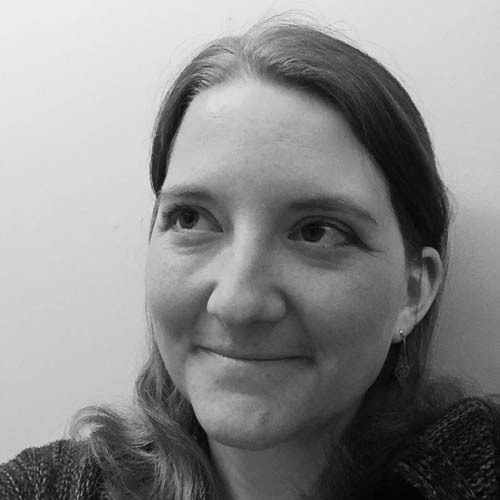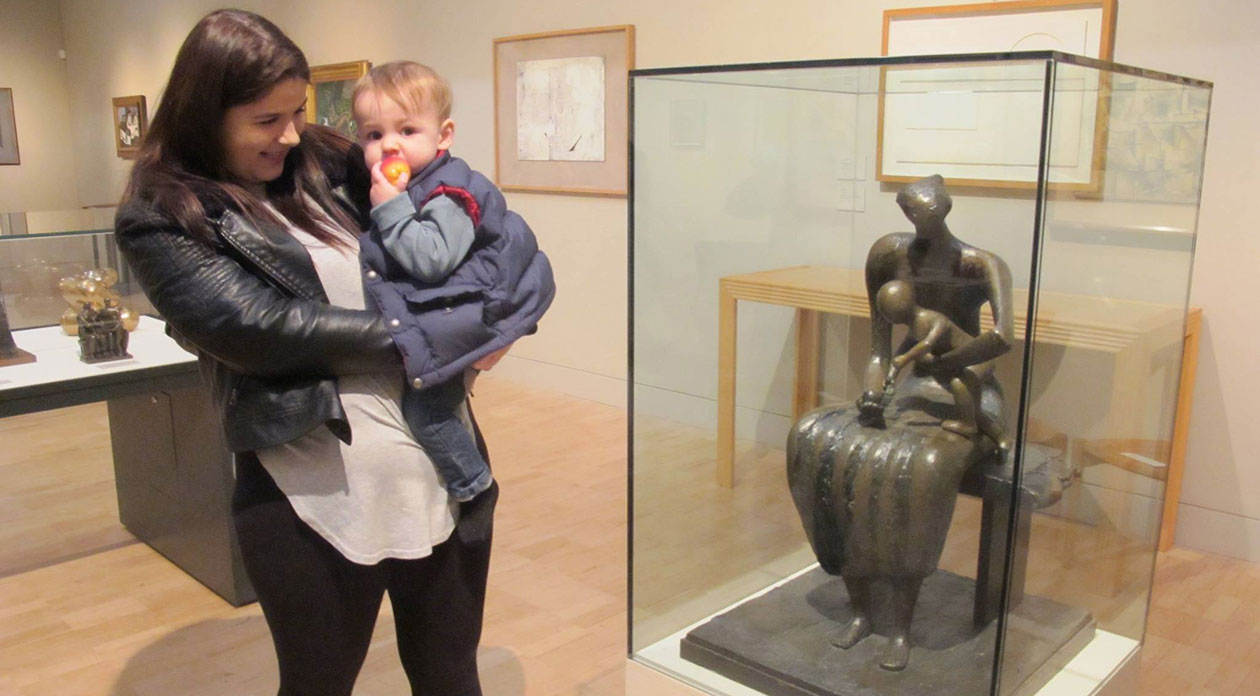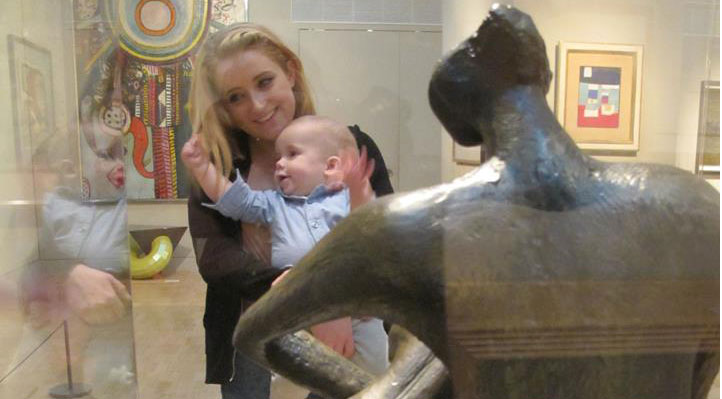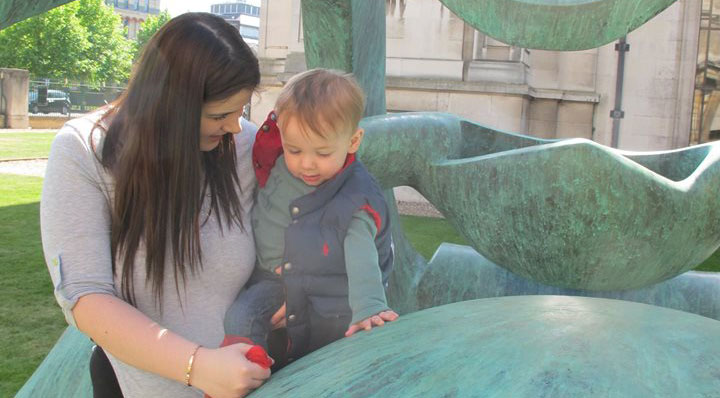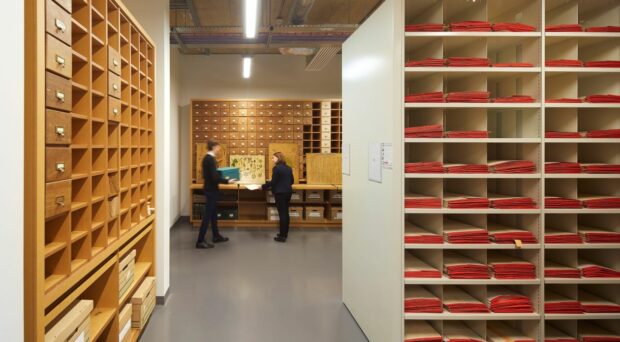We have been working alongside Romsey Mill Children’s Centre to give young parents and their babies the opportunity to develop a sustained relationship with the Fitzwilliam Museum through a variety of experiences, leading participants to a Creative Families Award.
We recently enjoyed another varied and exciting session with our Creative Families! The young parents and babies have attended the museum a number of times now, and through their experiences and interactions have helped the project to progress very naturally. Find out more about the project in our first blog post.
This time we were thinking about artists and their work. Previously, the children had shown a lot of interest in natural objects, particularly those hanging from a mobile on the ceiling of our art studio! This got us thinking about artists who have been inspired by the natural world, and Henry Moore instantly sprang to mind.
We spent some time together enjoying the unique atmosphere of the museum’s twentieth-century gallery. The babies were given resources to help them tune into key aspects of the artworks that we thought might be of interest: complementary colours to arrange and rearrange; highly textured items; and bold, geometric shapes. It was interesting that the objects that seemed to interest the babies the most this time were curved surfaces and round objects that they could cup in their hands.
This led beautifully into looking at Henry Moore’s sculpture ‘Mother and Child with Apple’. We playfully recreated the image by taking photos of the mother and baby pairs holding a toy apple. The parents in the group were quick to see links between the family portraits by Henry Moore and the images of the Holy Family in the Madonnas and Miracles exhibition next door.
We took advantage of a beautifully sunny day to get outside and see Moore’s ‘Hill Arches’. Here it was interesting to note that the group split, with each mother and baby playing together as partners, responding to each other and the sculpture with seemingly little reference to other participants or the facilitators. I mentioned to the group that some people sense an idea of family when looking at this piece and one of the parents commented, ‘Oh yeah! I see – male, female and baby!’ indicating different elements of the sculpture.
Again, the curving round shapes seemed to resonate powerfully with the families, with babies and mums taking time to cuddle and connect with each other in the embrace of the sculpture itself.
We extended the interest in natural shapes and their possibility for movement by making mobiles. We used sticks, shells, pieces of textured bark and sinuous twirling ribbons, which were selected by the parents based on the children’s interests. In early years practice we are often encouraged to focus on process over product, valuing experiences over physical objects, however, during this course, and this session in particular, I have become increasingly aware of the importance of the product as part of the process. One of the mums articulated that it’s important to her to create these physical mementos of experiences she has had with her son. Their art works always include their names and dates, marking the moment they were created for future reference. Creative Families, in contrast to a one-off, drop in visit, is about forming a relationship between the family and the museum, and the art objects that the families make and take away to display in their home and share with other people are a crucial aspect of that process.
‘I really enjoy it, and so does my son.’
‘Loved going outside with the sculpture’
To find out what else is happening at the Fitzwilliam Museum for babies, toddlers and preschoolers, please contact Nicola Wallis.
With grateful thanks Cape UK, Humber Museums Partnership, Abigail Hackett & the Team at Manchester Metropolitan University for their support with developing this project, and to Alison Ayers and Nathan Huxtable for photography assistance with the delivery of the gallery and studio workshop.

